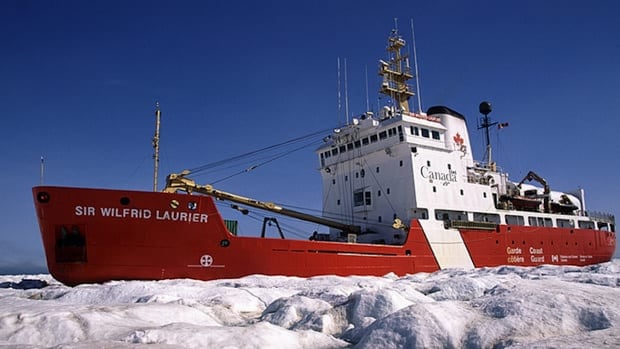[
The Canadian military and possibly the coast guard appear to have been keeping tabs on a Chinese research vessel as it returns to Arctic waters off Alaska for the second year in a row.
Data compiled by an independent researcher and ship tracker, Steffan Watkins, shows a Canadian air force CP-140 surveillance plane was flying in the vicinity of the Xue Long (Snow Dragon) 2 as it exited the Bering Strait on Sunday.
The aircraft, according to Watkins’s research, relocated to Anchorage, Alaska, from its base in Comox, B.C., on July 9. It has conducted four patrols since then, including the most recent one involving the vessel, which is China’s first domestically built polar research ship.
Despite publicly available flight tracking showing the CP-140’s patrol route, the Department of National Defence would not confirm on Monday the presence of the aircraft and said it couldn’t immediately answer questions on the deployment.
The air force appears to have picked up where the Canadian Coast Guard left off.
Coast guard says it’s monitoring illegal fishing
The Chinese ice ship left Shanghai on July 6 and passed close to Japan a few days later, before heading north into Russian waters.
“Shadowing the Xue Long 2 all of the way from Japan was CCGS Sir Wilfrid Laurier, which unmistakably paralleled their transit, staying in international waters,” Watkins wrote in his latest post, which included ship-tracking data.
The coast guard ship, the data shows, stuck with the Xue Long 2 until it crossed into the Bering Strait, between Alaska and Russia.
Asked about the mission of the Sir Wilfrid Laurier, the coast guard at first provided a circumspect response and pointed CBC News to a June 9 media release which said the ship would be conducting high seas patrols in the North Pacific to counter “illegal, unreported and unregulated (IUU) fishing.”
Then late Monday, the agency denied it was shadowing the Xue Long 2.
The stated mission of the coast guard ship was to focus on “migratory routes for key species like Pacific salmon,” it said.

However, when ship-tracking data is overlaid with publicly available data on salmon migration routes, only one-third of the recent voyage involved known salmon paths.
The ship’s helicopter was also slated to conduct patrols with Canadian fishery officers in Japan to “monitor fishing vessels and support partner countries to ensure compliance with international law,” according to the statement.
Prime Minister Mark Carney pledged to expand the reach, security mandate and abilities of the Canadian Coast Guard as part of the Liberal government’s plan to beef up the country’s defences. Eventually, the federal government intends to integrate the civilian agency, currently under the Fisheries Department, into Canada’s NATO defence capabilities to, as Carney put it last June, “better secure our sovereignty and expand maritime surveillance.”
Last summer, the Royal Canadian Navy dispatched a frigate to monitor the Xue Long 2 during its voyage to the Arctic — a mission the Department of National Defence took more than a week to acknowledge.
Military experts have described the Chinese ice research ship as a dual-use vessel — suggesting it has a military or defence capacity.
Canada is planning a major Arctic military expansion, boosting its presence by several months each year and inviting more NATO troops to join. The move aims to assert sovereignty and respond to pressure from U.S. President Donald Trump.
University of British Columbia Arctic expert Michael Byers said he believes Canadian officials need to be more forthcoming about the security threat they believe the vessel poses.
“One has to actually do a proper threat assessment,” Byers told CBC News in an interview.
Byers acknowledged the Chinese ship could be collecting data that’s militarily relevant, but he questions if the term “dual-use” is relying on assumptions rather than evidence.
Relations with China continue to be strained and Byers said statements that are “potentially escalatory” about what the Chinese are — and are not — doing in the Arctic need to be examined carefully.
Having said that, he fully supports the military and coast guard’s monitoring activities.
“We’re very concerned as a country about China as a rising military power, and obviously China is very strongly supporting Russia with regards to its invasion of Ukraine,” Byers said.
“So yes, if a Chinese government vessel is sailing anywhere close to the United States or to Canada, then yeah, we would be monitoring it.”

